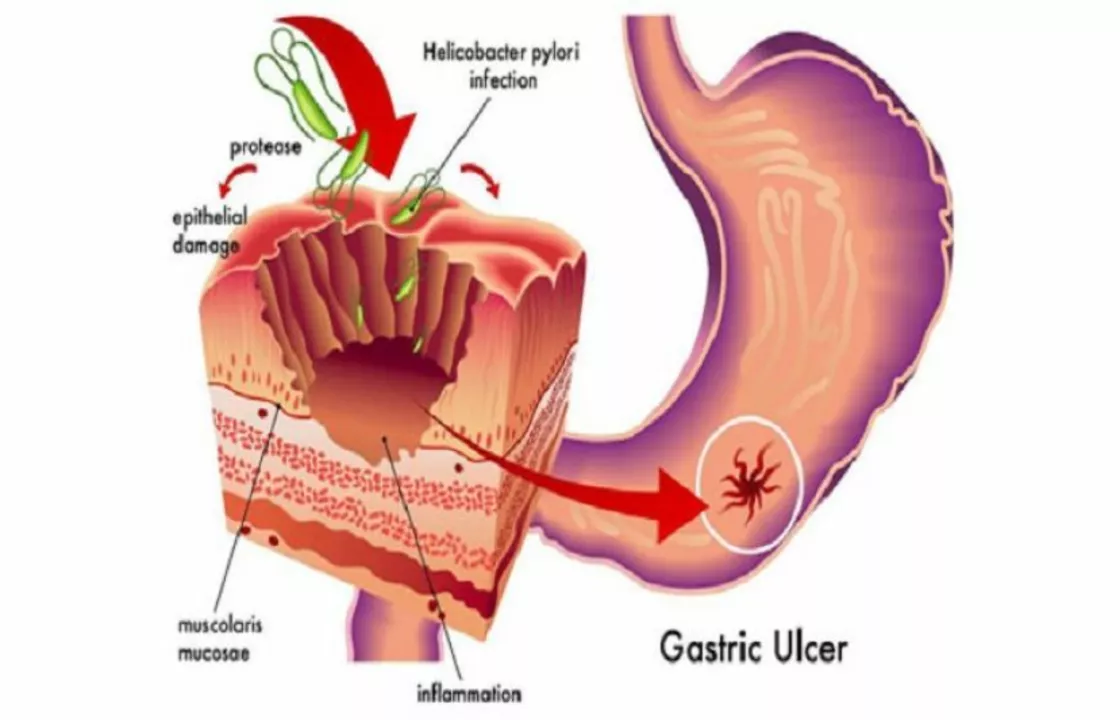Helicobacter pylori — what to watch for and what to do
Did you know a common stomach bug can hide for years and cause ulcers or long-term stomach problems? Helicobacter pylori (H. pylori) is a bacteria that lives in the stomach lining. Many people have it and never notice, but for some it causes burning stomach pain, bloating, nausea, or unexplained indigestion.
Symptoms and when to get tested
Not everyone with H. pylori feels sick. Common signs that suggest testing include: persistent upper belly pain, frequent heartburn or reflux, nausea, unintentional weight loss, or signs of bleeding like black stools or faintness. If you have a family history of stomach cancer and chronic stomach symptoms, bring this up with your doctor — they may recommend testing sooner.
Tests are simple. Your doctor can order a urea breath test or a stool antigen test to check for active infection. Sometimes an endoscopy with a biopsy is used if you have severe symptoms or alarming signs. Blood tests can show past exposure but don’t reliably prove an active infection.
Treatment, follow-up, and practical tips
Treatment usually uses a combination of two antibiotics plus a proton pump inhibitor (PPI) for about 10–14 days. The goal is to fully clear the bacteria — stopping early raises the risk of resistance. If the first course fails, doctors often use a different antibiotic mix or add bismuth (a common second-line strategy).
After treatment, you should have a test of cure. That’s typically a urea breath test or stool antigen test done at least four weeks after finishing antibiotics. Also wait at least two weeks after stopping PPIs before testing to avoid false results.
Worried about side effects? Nausea, diarrhea, or yeast infections can happen. Taking probiotics during and after treatment can reduce antibiotic-related diarrhea and may improve comfort — but probiotics don’t replace antibiotics for curing H. pylori.
For prevention: good hand hygiene, clean food and water, and avoiding sharing eating utensils in high-risk settings help lower spread. In most developed countries reinfection in adults is uncommon after successful treatment.
If you have ongoing stomach pain, unexplained weight loss, signs of bleeding, or persistent symptoms after treatment, see your doctor. H. pylori is treatable, but it takes the right tests and a full course of therapy. If you want more on tests, treatment options, or how to manage side effects, check our related guides here on DoctorAlexa Pharmaceuticals.

The link between ulcers and Helicobacter pylori infection
I recently came across some fascinating information about the link between ulcers and a bacterial infection called Helicobacter pylori. It turns out that the majority of ulcers are actually caused by this bacterium, and not by stress or spicy foods, as was once believed. H. pylori infections can be treated with antibiotics, which can ultimately lead to the healing of ulcers. This discovery has truly revolutionized the way we approach and treat ulcers. I'm glad I stumbled upon this, and I hope it helps others better understand the real cause of ulcers.
More Detail